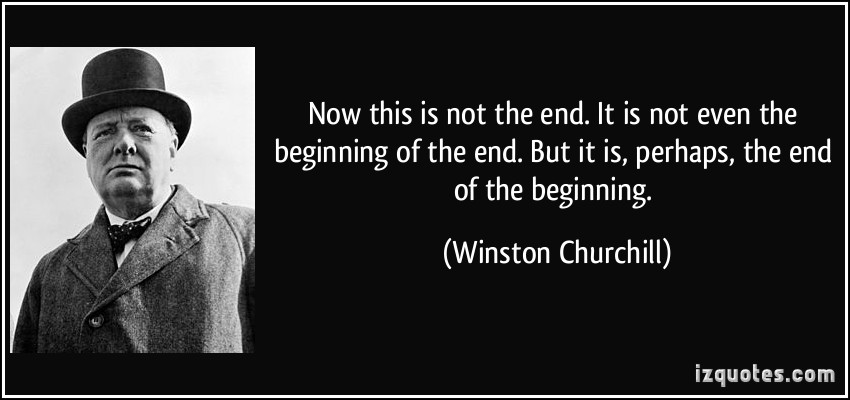By Doug Stephens

Global ecommerce is set to top 1.2 trillion dollars this year. And if that doesn’t seem astonishing, then consider that the figure represents a 19 percent increase over 2012 levels. This, while brick and mortar retail slogs along at an anemic single-digit pace. Giants like Walmart, Target, JC Penney, Office Depot, Best Buy and others are all feeling what has gone from being a pinch from online to a full out bludgeoning at the hands of Amazon, eBay and a never ending pipeline of hungry and innovative digital pure plays.
Are we there yet?
The question on the minds of many in the retail market, especially brick and mortar retailers is when will ecommerce top out? When will we reach a point of maturity where online market penetration can’t get much higher and operating costs can’t get much lower? In other words, has the majority of the online onslaught already been realized or is there more to come?
To answer that, first, consider that even at its frantic pace of growth, ecommerce still represents less than 10 percent of all retail. Most of what we buy today still comes from physical stores. In fact, much of the world doesn’t even currently have the telecommunications infrastructure for suitable Internet access; a condition that companies like Facebook have vowed to fix by bringing another 5 billion people online. So it’s hard to argue that we’re even close to approaching any sort of market saturation point. There’s immense room for growth in ecommerce, both domestically and globally.
The party is just getting started
Mobile usage is poised to catalyze an entirely new wave of more in-the-moment, contextual purchase behaviors causing a quantum shift in the ease with which we are able to buy on the fly – from a tweet, a video or any other piece of media. The store will literally follow us wherever we go. Mobile services like eBay Now and Google Shopping Express are both aggressively expanding to offer same-day (and even same-hour) shipping on a wide range of items in major American cities, 24 hours a day, 7 days a week.
Frankly, even our concept of what mobile is, is changing. With the evolution of wearable devices, improving voice recognition technology and biometric payment security, mobile commerce is bound to become far simpler, elegant and more intuitive than it is today.
Our comfort, as consumers, with ecommerce also continues to grow. With Amazon Fresh grocery delivery, Bezos and company are building a Trojan horse that, once accepted into the homes of consumers, will become the gateway to a plethora of other products, content and services that a household might need day to day. And of course, peripheral technologies, like augmented reality and haptography (simulated tactility), are making buying even hard-to-buy-online items like furniture, textiles and clothing easier than ever before.
North America is just the thin edge of the wedge
Abroad, China’s e-tailing market is exploding at a compounded annual rate of 120 percent per annum as the country makes its way to displacing the U.S. as the world’s largest consumer economy. Even in India, where much of the population doesn’t use the Internet, ecommerce is projected to soon begin disrupting, and even replacing, brick and mortar retail for Indian shoppers.
The Declining Cost of Doing Business
As for costs of operation – chief among them being product delivery – technologies like driverless, autonomous electric vehicles, which are already test-driving around Las Vegas, are sure to be rapidly adopted by major courier companies as it becomes feasible to do so, substantially reducing delivery costs. Digital drop boxes, like those offered by recent Google acquisition Buffer Box will make bring new levels of efficiency to the delivery process – especially in major urban centers.
Picking, processing and packing orders – a substantial portion of e-retail operating costs, is still a surprisingly manual task – even at an e-com forerunner like Amazon. Hard as it may be to imagine, human beings still physically pick and pack every single Amazon order. But make no mistake, the potential cost reduction opportunity that hasn’t escaped the watchful eye of Amazon CEO Jeff Bezos who has already experimented with forms of robotics to automate these tasks.
So, I think it’s fair to say that anyone anticipating an imminent plateau in  ecommerce growth is likely to be disappointed… for a long time. Not only is the volume and velocity of digital commerce likely to continue at its present clip but the net profitability of resulting sales is likely to improve as well – representing a renewed, double-threat to any less-than remarkable brick and mortar experience in the market. Average businesses will be nothing more than weak prey for Amazon, eBay and a host of others onlines.
ecommerce growth is likely to be disappointed… for a long time. Not only is the volume and velocity of digital commerce likely to continue at its present clip but the net profitability of resulting sales is likely to improve as well – representing a renewed, double-threat to any less-than remarkable brick and mortar experience in the market. Average businesses will be nothing more than weak prey for Amazon, eBay and a host of others onlines.
Are we even close to maturity in ecommerce? Hardly. In fact, I would say that if the adoption curve of online retail were a baseball game, we might be mid-way through the second inning with almost the whole game ahead of us.

